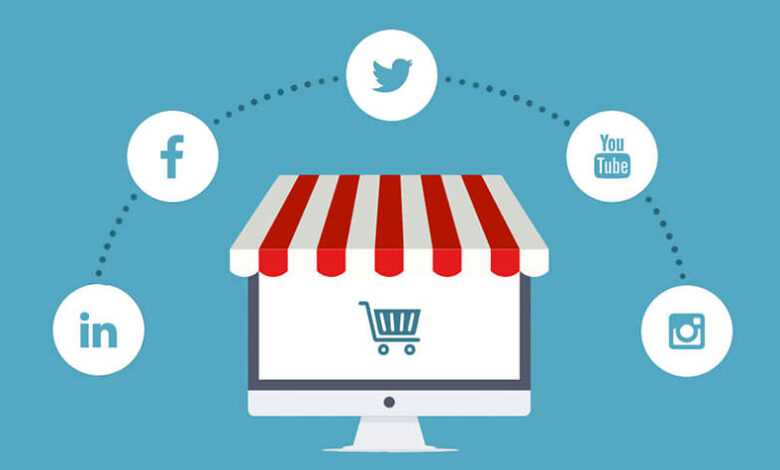Social Media Ecommerce: Strategies, Benefits, and Real-World Applications for Modern Brands

What is social media ecommerce?
Social media e-commerce is when you market and sell stuff for your online business using social media. It’s not just throwing up some ads or working with influencers. It’s more about getting your brand out there, getting noticed online, getting more customers, and even selling stuff right on social media sites.
Another thing people talk about is social commerce. That’s basically the part of social media e-commerce where you sell products directly on social media.
Another piece of the puzzle is mobile commerce, which focuses on selling via mobile devices, whether through apps or mobile browsers. And this matters because almost all social media users—like 99%—use smartphones. So, social media ecommerce is basically a natural extension of mobile shopping.
In short, social media ecommerce combines the power of social networks with the convenience of online shopping, creating a seamless, interactive buying experience—and it’s also an opportunity to provide real-time social media customer service, keeping customers happy while they shop.
Advantages of social commerce for brands
Social commerce comes with a ton of benefits for businesses that are willing to try new things. Here are some of the big ones:
1. Innovation through a new purchase channel
China has been way ahead with social commerce, where it makes up around 12% of online sales. But the trend is spreading fast globally. In places like the UK, social commerce is seen as a modern and innovative way to shop.
Some stats show why it’s so appealing: YouGov (2022) found that 43% of shoppers are drawn to promos, 30% buy stuff not available anywhere else, and 23% love the speed and simplicity of buying straight from social media. For brands, this opens up a fresh channel to sell and stand out.
2. Build stronger connections with customers
Social networks are more than just ways to sell stuff. They’re places to actually talk to your customers. Companies can chat with people before, while they’re buying, and after they buy, which helps keep them coming back.
Messaging apps and chatbots enable one-on-one interactions, making the buying process easier and faster. Every post, comment, or direct message strengthens customer relationships and makes social media for ecommerce even more effective.
3. Target your audience precisely
Social networks are basically modern malls with a huge bonus—they know a lot about their users. Brands can use this data to create highly targeted ad campaigns.
This means you get better customer insights, more engagement, and stronger loyalty. Plus, targeting specific segments makes your marketing way more efficient.
4. Make feedback collection easier
One of the underrated perks of social commerce is how simple it makes feedback collection. Customers can comment on posts, create user-generated content (UGC), or contact you privately.
For brands, this is a goldmine of insights. Every comment, review, or post helps you understand your audience better and improve your products or services.
5. Appeal to younger generations
Millennials and Gen Z are now some of the biggest consumer groups, especially in places like the UK. And they want fast, dynamic, and self-directed online experiences.
Social commerce, especially live shopping, fits this perfectly. For example, 55% of Gen Z and 62% of Millennials say they’d buy products directly via live videos from brands or influencers. McKinsey also found live shopping increases engagement with younger consumers by about 20%.
6. Reduce friction, give more autonomy
Social media ecommerce makes buying super easy. Customers can check out on their phones, store payment info, and complete purchases in just a few clicks.
This means less friction, more autonomy, and a smoother experience. Customers can research, read reviews, and make decisions without ever leaving the platform. That kind of seamless shopping encourages repeat purchases and happier customers.
7. Grow with a constantly expanding audience
Social networks are always growing, with new users joining every day. This is a big chance for brands to expand their audience and build loyalty.
Plus, social media breaks down geographic barriers. With viral content and global access, brands can reach new markets quickly. For both B2B and B2C businesses, social commerce is a solid long-term growth strategy.
Pro-tip: Improve your social media impact using the best social media management tools. By using such tools, you can plan, schedule, and optimize your social media in one platform. Further AI features can help you to optimize your social strategy.
Examples of social media ecommerce in action
Here’s how a few top brands are nailing social media ecommerce:
1. Solo stove
They sell portable, smokeless fire pits and lean really hard on social media videos. Like, one video about a sale might show bonus items if you spend over $200. Stuff like that drives traffic to their website, and they could even link up with a Facebook Shop so people can buy directly. Videos do a lot at once—they inform, engage, and kinda nudge people to act.
2. WallyGrow
WallyGrow sells wall planters and mostly uses Instagram. With an Instagram Shop, they push their products straight to people. Giveaways are a big thing—they let folks try stuff without risk, which usually makes them buy more and tell their friends. Pretty visuals and interactive campaigns make people both like and actually buy.
3. Spikeball
Spikeball, the outdoor game company, is all over TikTok. Their videos show fun ways to play, like glow-in-the-dark games. They got a TikTok Shop too, even if they don’t always tag products in every video. Their engaging videos help Spikeball connect with buyers and sell the whole lifestyle around their games, not just the game itself.
Conclusion
Social media ecommerce isn’t just about selling stuff online—it’s about real connections, building relationships, and using platforms to actually grow. From targeting the right audience to engaging communities and making buying easy, social commerce is really changing how businesses market and sell.
For brands ready to try new things, think mobile-first, and get creative, social media ecommerce is a super exciting way to grow, build loyalty, and succeed long-term.




